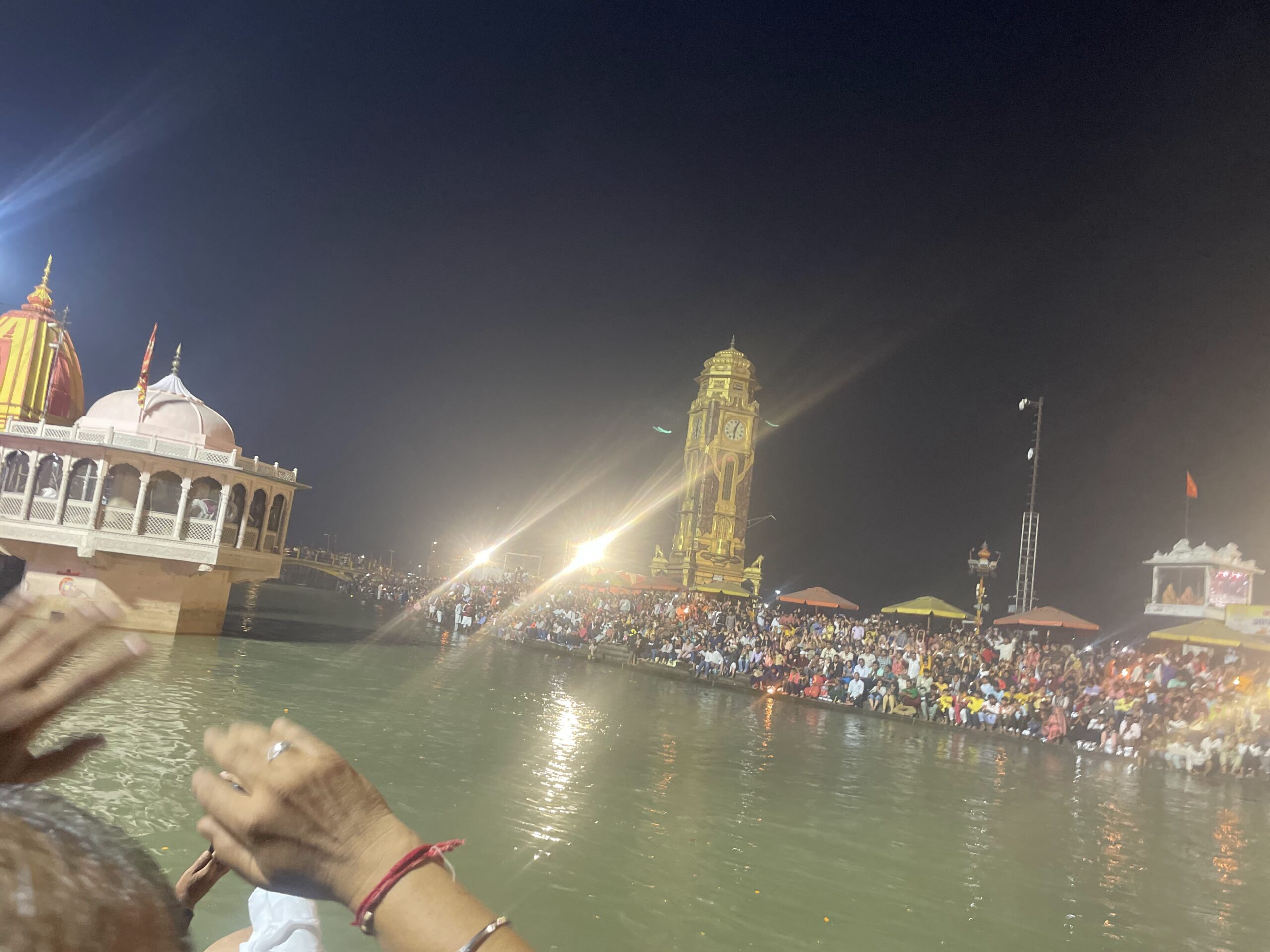Kumbh Mela (Maha Kumbh / Ardh Kumbh / Kumbh) – Significance
Kumbh Mela represents the largest religious human gathering in the world. It is the festival of sacred pitcher. Every 6,12 and 144 years marks Kumbh. The four major pilgrimage sites of Kumbh Mela are: Prayagraj, Haridwar, Nashik, and Ujjain. Prayagraj has the confluence of Ganga, Yamuna and Saraswati rivers. Haridwar has the Ganges, Nashik has the Godavari and Ujjain has the Shipra river. Numerous fairs, ritual dips in water, religious discourses by saints, and mass gatherings of monks are some of the main attractions of the Kumbh Mela. People believe that taking a bath in the rivers cleanses them from their sins.
Under British supervision, the first Kumbh was organized in 1870. The festival credits to Adi Shankaracharya whose efforts were to start a Hindu gathering for philosophical discussions and debates. Kumbh Mela means assembly or union around the water or nectar of immortality.
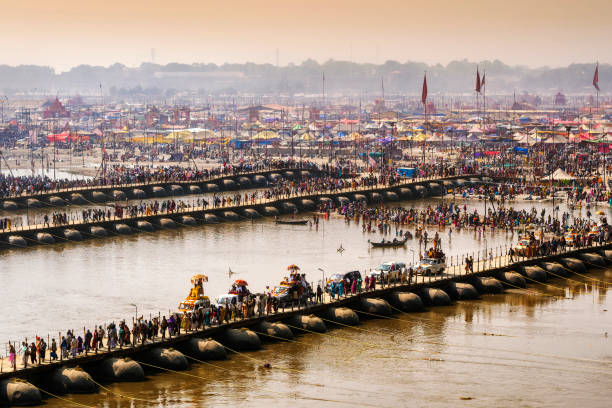
Historical Origins
As per Hindu mythology, evil and good forces churn the ocean, creating the Amrit or Nectar of immortality. The gods and demons fight over this Kumbh or pot to gain the nectar of immortality during the Samudra Manthana. Their struggle for the nectar caused the pot to break, spilling it at four locations, now sites of the Kumbh Melas. Some stories associate the Mohini Avatar of Lord Vishnu, Dhanvantari, or the Garuda spilling the pot.
The amrit kalash having the nectar of immortality was saved from demons by Lord Brihaspati with the help of Sun, his son Shani, and Moon. Jayant, the son of Lord Indra, snatched the Kalash from Dhanvantri to be saved from demons and kept running for twelve days (twelve days of gods = one year) thereby spilling the drops. The places where the drops spilled are the ones where the Kumbh takes place.
The astrological sign Kumbh (Aquarius) determines the dates of the Kumbh Mela of Haridwar which is the original Kumbh. There are several mentions of the annual bathing festival or the Magh Mela along with the Kumbh Mela in the Mughal texts at Prayag, Nashik, Ujjain, and Haridwar. The Magh Mela of Prayag is the oldest among the modern-day Kumbh Melas. Several early Puranas mention it.
Akharas
There are thirteen Akharas (warrior ascetic bands) of which ten belong to Hinduism and three to Sikhism. Seven are related to Shaivism, three to Vaishnavism, two to Udasis, and one to Nirmalas. They are a prominent feature of the Kumbh Mela. These Akharas managed the Kumbh Mela before the rule of the East India Company. They provide logistical arrangements, policing, judge disputes, collect taxes, and provide spiritual guidance and blessings.
The Akharas have their roots in the Hindu Naga (naked) monks tradition, who went to war without clothes. During the 17th century, the Akharas competed for ritual primacy, bathing orders, and other logistics which led to clashes. In 1760 Kumbh Mela in Haridwar, a clash broke out between Shaivite Gosains and Vaishnavite Bairagis (ascetics), resulting in hundreds of deaths. Around 12,000 ascetics died in a clash between Shaivite sanyasis and Vaishnavite bairagis at the 1789 Nashik Kumbh Mela. At the 1796 Kumbh Mela in Haridwar, violence broke out between the Shaivites and the Udasis on logistics and camping rights.
The clashes attracted the attention of the British East India Company which intervened and laid out camps, decided their bathing order, and other things. After 1947, the state governments provided the necessary infrastructure for the respective state and made other decisions.
The Kumbh Melas attract many loner sadhus (monks) who do not belong to any akharas.
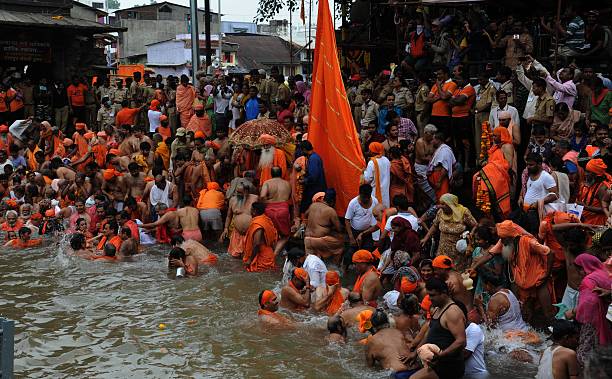
Source: Anshuman Poyrekar/Hindustan Times via Getty Images
List of the Akharas:
- 7 Shaiva akharas: Mahanirvani, Atal, Niranjani, Anand, Juna, Avahan, and Agni
- 3 Vaishnava akharas: Nirvani, Digambar, and Nirmohi
- 3 Sikh akharas: Bara Panchayati Udasins, Chota Panchayati Udasins, and Nirmal
Classification
- The Purna Kumbh Mela / Full Kumbh Mela / Kumbh Mela: It occurs every 12 years at a given site.
- The Ardha Kumbh Mela: It occurs every 6 years between the two Purna Kumbha Melas at Prayagraj and Haridwar.
- The Maha Kumbh Mela: It occurs every 144 years.
Dates
The celebration date of each site is determined by a special combination of zodiacal positions of Brihaspati (Jupiter), Surya (the Sun), and Chandra (the Moon). The location of the Kumbh Mela is also determined by the positions of the Sun and Jupiter but the cycle repeats every 12 years.
- When Jupiter enters Aquarius and the Sun and Moon are in Aries and Sagittarius, the Kumbh is held at Haridwar.
- The Kumbh takes place at Prayagraj, when Jupiter is in Taurus and the Sun and Moon are in Capricorn.
- When Jupiter enters Leo and the Sun and Moon are enters Cancer, Kumbh is held at Nasik and Trimbakeshwar.
- The Kumbh takes place at Ujjain, when Jupiter is in Leo and the Sun and Moon are in Aries.
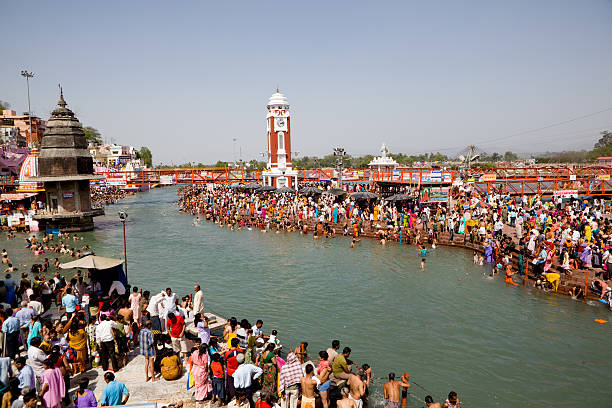
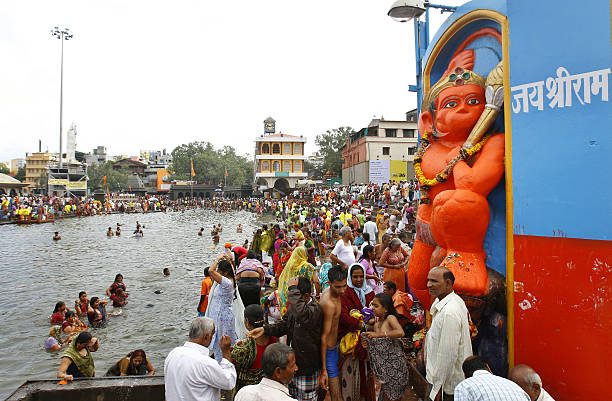
Nasik
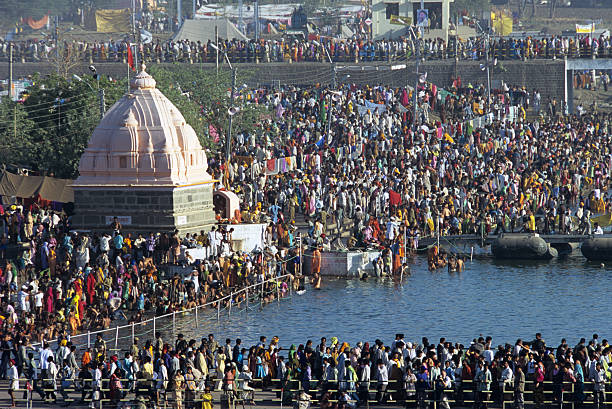
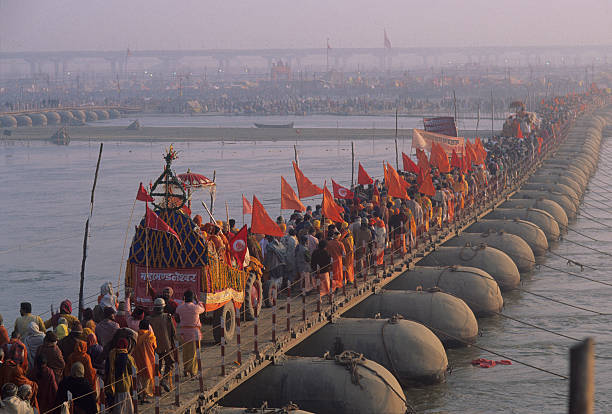
Rituals
Bathing
It is one of the most important rituals of the Kumbh. The belief behind taking a bath in these holy rivers has salvific value. It provides liberation from the birth and life cycle. The pilgrimage is for those who have made mistakes and repent for them. Mundan (shaving of the head), prayers with offerings such as flowers, sindur (vermilion), milk, or coconut, and the recitation of hymns with sradha (prayers in honor of one’s ancestors) may accompany the bathing ritual.
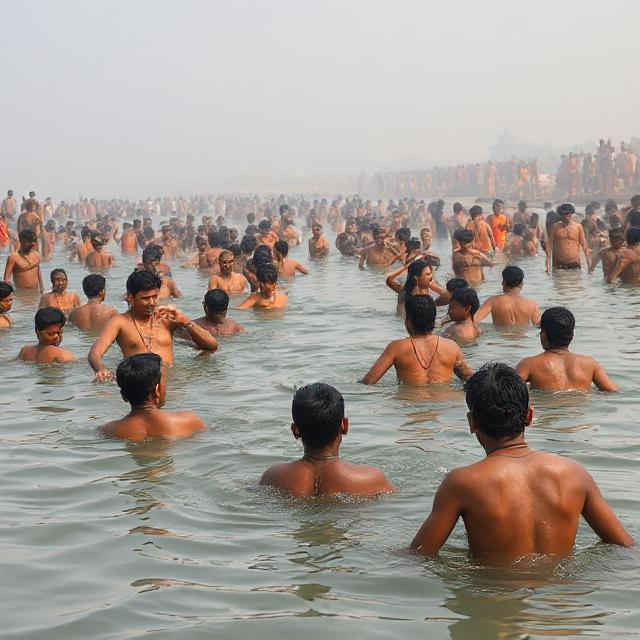
Also, Yajna or homa by a priest could also be a part of the bathing ritual. The pilgrim then takes a bath in water, stands up, prays for a short while, and exists.
Amavasya is the most cherished day of bathing. The pilgrims wait for the thirteen sadhu akharas to bathe first. This event is called shahi snan or rajyogi snan. A celebratory processional march marks the shahi snan, featuring banners, flags, elephants, horses, and musicians, along with naked or scantily clad monks, some smeared with bhasma (ashes).
Festivities and Discussions
Some pilgrims walk barefoot. Some stay for a day or two, and some for even the whole month. They attend spiritual discourses and pray. The festival is strictly vegetarian. Some pilgrims observe fast. There are Anna Daan events. Charitable organizations organize celebratory feasts where many people sit in lines to eat. There is devotional singing or kirtans along with pravachans. There are laser light shows, classical dance, and musical performances from different parts of India. People do boat rides, visit historic sites near the river, visit the temples nearby, and adapt spiritual discourse.
Darshans
Sadhus from various parts of the country visit the Kumbh Mela to engage with Hindu worshippers. Interaction with Sadhus is respectful, devotees often leave offerings as a token of their devotion.
Management
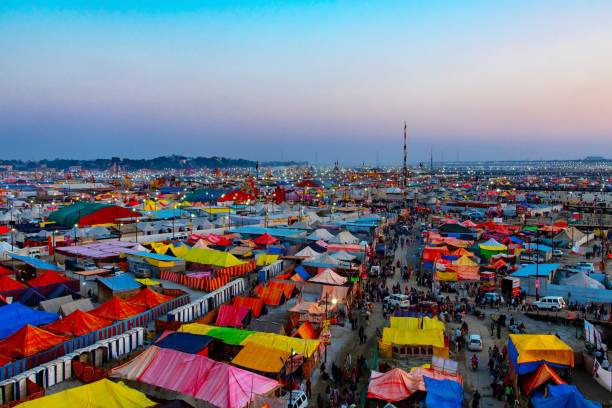
The Kumbh Mela attracts millions of people. Temporary infrastructure is prepared months before the start of the festival. Officials divide the area into sectors. Pre-planning of camping, food, water, sanitation, health services, and disaster management is done.
Kumbh is not just a gathering but a confluence of pilgrims from all over the world not only India full of devotion and faith.
